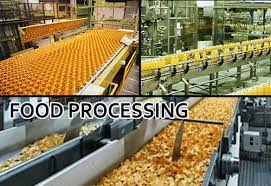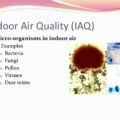What is Physical Contamination of Food?
Physical contamination occurs when a food has been contaminated by a foreign object. It can occur at any stage of food delivery and preparation. Physical contamination can cause serious harm to the consumer, including broken teeth or choking.
Types of physical contaminants that can be found in food include jewelry, hair, plastic, bones, stones, pest bodies, and cloth. Additionally, if there are problems with the food premises or equipment, such as flaking paint or loose screws in a piece of equipment, then these may also enter food. Physical contaminants may even carry harmful bacteria, posing an even greater risk.
The physical contamination of food is something tangible that is not intended to be part of the product. This type of contamination risk includes the chances of different foreign objects entering the final food product during the production process (external sources) or those that already exist in the raw material (internal sources) which is used to create the end-product.
These physical hazards need to be identified, controlled, and detected at a certain level to provide consistent quality and food safety for the consumers. It’s always important to understand which of the physical contaminations could cause serious harm to the consumer and make proactive actions to control and prevent such hazards. Common examples of physical contaminants include:
- hair
- fingernails
- bandages
- jewelry
- broken glass, staples
- plastic wrap/packaging
- dirt from unwashed fruit and vegetables
- pests/pest droppings/rodent hair.
How to prevent and control physical contaminants in food production
The first step in controlling and preventing physical contaminants in food production is to create a safety culture throughout the entire food processing chain. Food producers should make necessary changes and actions to ensure a production environment where the possible sources for physical contaminations are mitigated. These proactive actions prevent the contamination risks and limit the number of contamination cases to a fraction, compared to complete negligence of safety culture and preventive actions.
To do this correctly, food producers need to target the suspected sources of physical contaminants and identify the contaminations that possess a true risk. Once this is done, it’s important to evaluate the root cause, eliminate the contributing factors, and implement an inspection system in place to verify and control that these actions have been successful.
Investigation and Identification of Physical Contaminants
Food companies work hard to keep their products free of contaminants. Investigation and control of physical contaminants in food should be conducted throughout the whole processing chain or in food testing laboratories. With accurate and timely information, a thorough investigation can be carried out in testing laboratories in a cost-effective and efficient manner. It is essential to have a professional investigation team with appropriate resources and equipment to help food company quality assurance staff troubleshoot consumer complaints and answer questions as to what the contaminants and their sources are. It is often necessary to apply integrated, multidimensional approaches for complicated investigations.
Comprehensive investigation can demand microscopy-based examinations plus chemical techniques, on-site examinations, Fourier transform-infrared (FTIR) analysis, and other techniques. The investigation processes and screening procedures depend on the particular physical contaminants and their sources. The procedures can be combined or modified methods found from the following: AOAC International, American Spice Trade Association, FDA’s Macro-analytical Procedures Manual, FDA’s Laboratory Information Bulletins, USDA’s foreign matter identification documents, the United States Pharmacopeia, and other compendious sources.
In general, special investigation procedures include:
• Inspect and target suspected sources of physical contaminants
• Identify the foreign matter
• Determine or evaluate the root cause or sources
These procedures consist of eight steps:
1. Target contaminants. In many cases, it is necessary to select a suitable investigational procedure, including sample inspection, preparation, and identification of target contaminants. The sources of contamination are diverse, whether individual or related, or even unknown. Often, little is known about the contaminants, how many there might be, what size, what their regulatory status might be, or whether they might be in a food mixture.
Pre-examination steps allow judgments to be made as to whether the targets can be separated by size, shape, mass or magnetic properties, the type of samples and contaminants (e.g., organic or inorganic), amount, circumstances of contamination, and levels. It is normally required to conduct resampling, inspection, macroscopic examination, extraction, filtration, floating, sieving, burning, dyeing, and further examination using X-ray, metal detectors/magnets, and other screening or targeting technologies. An example might be to use magnets to gather and identify ferrous metal particles from liquid samples.
2. Identify contaminants. Once the suspected foreign matter screening procedures are carried out using stereo or dissecting microscopic examinations as a starting point, one can obtain detailed evidence, identifying the morphology and deciding what methods of analysis should be applied. For example, if a complainant believes that pieces of glass were observed by the naked eye in a food, it may be that the material consists of rocks, salt, sugar, plastics, minerals, struvite, or tartrate crystals. If needed, a compound microscope, bright-field/dark-field microscope, polarized microscope, or scanning electron microscope could be applied to reveal more details. Further tests are determined based on the results of microscopic examinations. Selection of such analytical strategies may require a combination of techniques or the development of multidisciplinary approaches, depending on contaminant conditions and the goals of the investigation.
3. Conduct physical property tests. A polarized microscope is used to display birefringent properties from some materials, such as synthetic polymers. Spectroscopic techniques can reveal specific functional groups of a chemical material. For example, different plastics may be identified by FTIR analysis. Physical properties can be classified by many characteristics and features, such as size, shape, thickness, magnetic characteristics, solubility, buoyancy, elasticity, flexibility, flammability, temperature resistance, etc.
4. Perform a chemical examination. Chemical analysis, including an elemental analysis, can reveal characteristic features that enable an understanding of chemical properties. Histochemical staining techniques are useful to test the chemical and physical properties of the contaminants. For instance, chemical reactions can be used for determination of lignin characteristics and enzymatic reactions.
5. Confirm. In many cases, no single method is 100 percent guaranteed to complete an investigation and identification. Further testing may be required to validate the findings or disprove them. For example, analysis by atomic absorption spectroscopy or other elemental analysis techniques reveals different types of metals. Examination of the combustion qualities of a sample can be used to find and quantitate foreign ferrous metal particles. Protein quantitative tests can confirm the presence of animal matter.
6. Compare. Building a reference library is necessary for a forensics laboratory. Identification relies on the availability of good reference library texts and official methods containing authentic reference materials as well as spectral databases to obtain definitive confirmation of the contaminants.
7. Evaluate the root cause. Whether a contaminant went through a specific processing step and was introduced into the product prior to or after packaging, potential sources could be uncovered through a prudent review of all test results and existing factors. If a piece of glass was confirmed, the following question will be raised: Is it more likely to be from a lightbulb, bottle, window glass, or drinking glass? This evaluation can be done to obtain more detailed information and evidence from the contaminant’s size, shape, mass, and characteristic features, especially compared with authentic reference materials. Any reference samples provided by clients are helpful to address the root cause.
8. Prepare a comprehensive report. After the investigation and identification are complete, a comprehensive report should be prepared, containing a summary of the project goals, sample information, test methods, imaging evidence, findings, evaluations, and/or suggestions.
Conclusions
A considerable variety of contaminants are possible in food that can render a food undesirable as a potential health hazard. Food companies rely heavily on a wide range of methods to minimize contamination and to detect it when it occurs. Investigation, identification, and remediation of food contaminants are powerful means to proactively avoid safety threats to consumer health and major losses to a company’s reputation and finances. Also Read: Why Is Food Safety and Sanitation Important?






